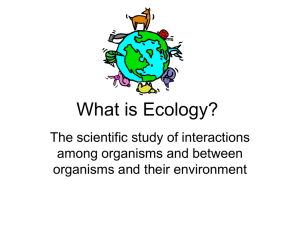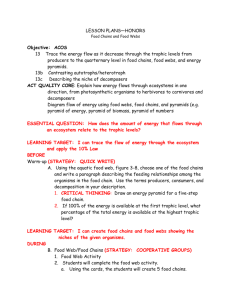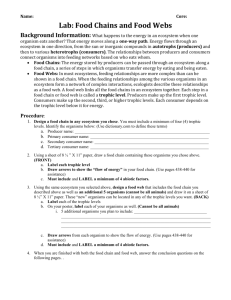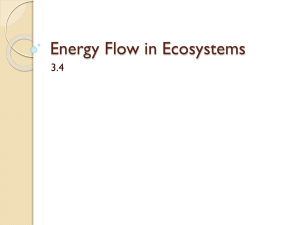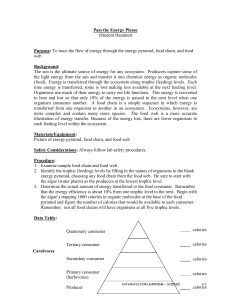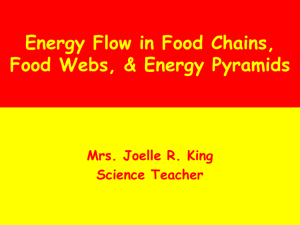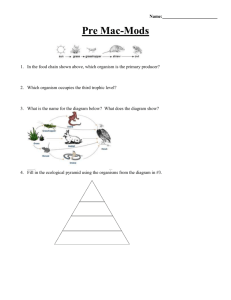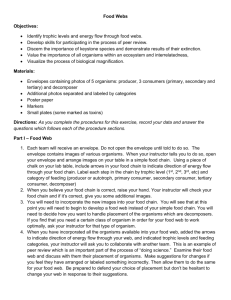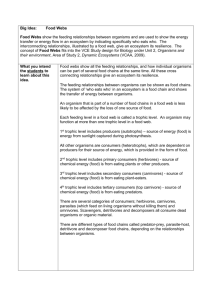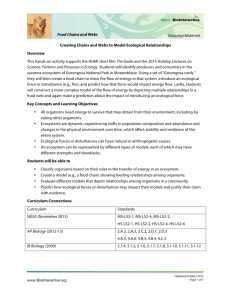File
advertisement
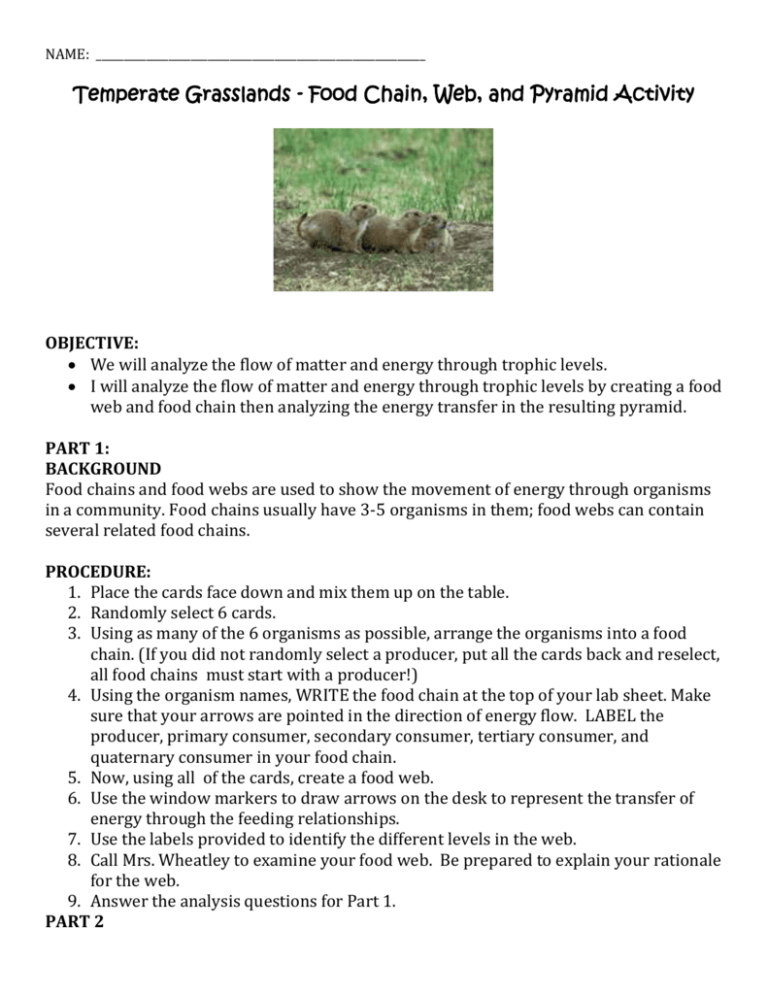
NAME: ___________________________________________________________ Temperate Grasslands - Food Chain, Web, and Pyramid Activity OBJECTIVE: We will analyze the flow of matter and energy through trophic levels. I will analyze the flow of matter and energy through trophic levels by creating a food web and food chain then analyzing the energy transfer in the resulting pyramid. PART 1: BACKGROUND Food chains and food webs are used to show the movement of energy through organisms in a community. Food chains usually have 3-5 organisms in them; food webs can contain several related food chains. PROCEDURE: 1. Place the cards face down and mix them up on the table. 2. Randomly select 6 cards. 3. Using as many of the 6 organisms as possible, arrange the organisms into a food chain. (If you did not randomly select a producer, put all the cards back and reselect, all food chains must start with a producer!) 4. Using the organism names, WRITE the food chain at the top of your lab sheet. Make sure that your arrows are pointed in the direction of energy flow. LABEL the producer, primary consumer, secondary consumer, tertiary consumer, and quaternary consumer in your food chain. 5. Now, using all of the cards, create a food web. 6. Use the window markers to draw arrows on the desk to represent the transfer of energy through the feeding relationships. 7. Use the labels provided to identify the different levels in the web. 8. Call Mrs. Wheatley to examine your food web. Be prepared to explain your rationale for the web. 9. Answer the analysis questions for Part 1. PART 2 BACKGROUND The sun is the ultimate source of energy for any ecosystem. Producers capture some of the light energy from the sun and transfer it into chemical energy as organic molecules (food). Energy is transferred through the ecosystem along trophic (feeding) levels. Each time energy is transferred, some is lost making less available at the next feeding level. Organisms use much of their energy to carry out life functions. This energy is converted to heat and lost so that only 10% of the energy is passed to the next level when one organism consumes another. Because of the energy lost, there are fewer organisms in each feeding level within the ecosystem. An energy pyramid compares energy used by producers, primary consumers, and higher trophic levels. PROCEDURE 1. Looking at your food web, select one food chain that includes at least 4 organisms. 2. Identify the trophic (feeding) levels by filling in the names of organisms in the blank energy pyramid on the back of your lab sheet. Be sure to start with a producer as the producers are at the lowest trophic level. 3. Determine the actual amount of energy transferred to the final consumer. Remember that the energy efficiency is about 10% from one trophic level to the next. Begin with the producer trapping 10,000 calories in organic molecules at the base of the food pyramid and figure the number of calories that would be available to each consumer. Remember: not all food chains will have organisms at all five trophic levels, your chosen food chain must contain at least four trophic levels. 4. Answer the questions below the energy pyramid you created.




